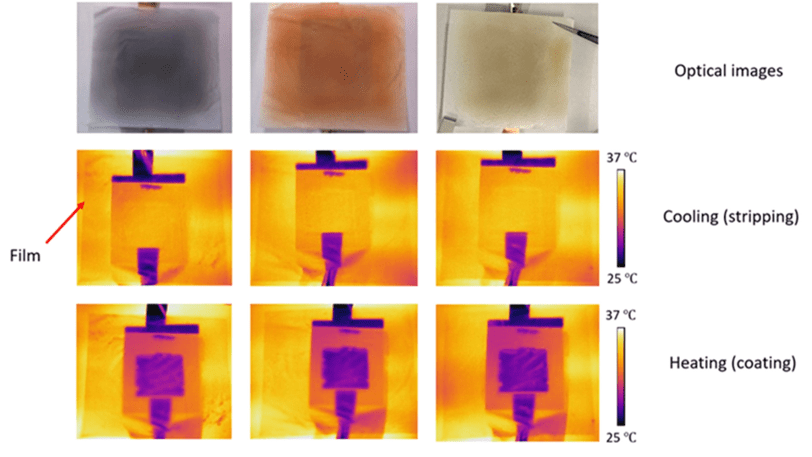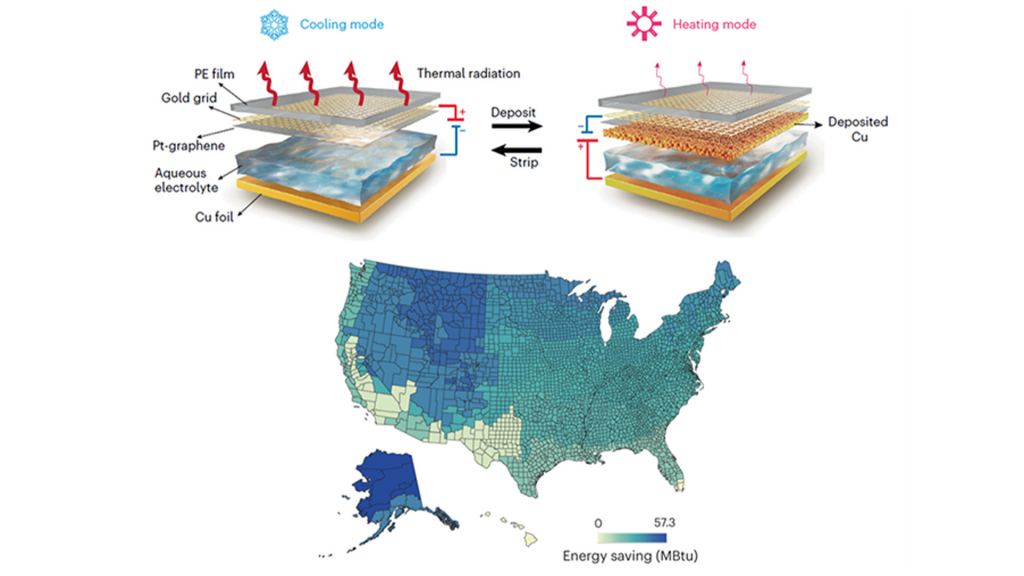Researchers at the University of Chicago’s Pritzker School of Molecular Engineering (PME) have created a chameleon-like material for construction that changes its infrared color, as well as how much heat it absorbs or emits, depending on the surrounding temperature.
The material is identified as chameleons, which are reptiles recognized for their ability to adapt to their surroundings. On hot days, for example, the material can expel up to 92 percent of the infrared heat it contains, assisting in cooling the inside of a building. On colder days, the material emits only 7% of its infrared, which helps keep a building warm.
“We’ve essentially figured out a low-energy way to treat a building like a person; you add a layer when you’re cold and take off a layer when you’re hot,” said Asst. Prof. Po-Chun Hsu led the study. “This kind of smart material lets us maintain the temperature in a building without huge amounts of energy.”
Buildings are projected to use 30% of the energy produced in the world and contribute 10% of greenhouse gas emissions. About half of this carbon footprint is used for heating and cooling interior spaces.

“For a long time, most of us have taken our indoor temperature control for granted without thinking about how much energy it requires,” said Hsu. “If we want a carbon-negative future, I think we have to consider diverse ways to control building temperature in a more energy-efficient way.”
Researchers have described how the device can quickly and reversibly flip between the metal and liquid states in the new paper. Moreover, they demonstrated that even after 1,800 cycles, the capacity to flip between the two configurations was still effective.
“This kind of smart material lets us maintain the temperature in a building without huge amounts of energy.”

The team created simulations of their material’s potential to lower energy costs in commercial buildings in 15 different cities, and they concluded that in a typical office building, the electricity needed to induce electrochromic changes in the material would account for less than 0.2 percent of the building’s total electrical consumption. However, it might reduce the facility’s annual HVAC energy use by 8.4%.
“Once you switch between states, you don’t need to apply any more energy to stay in either state,” said Hsu. “So for buildings where you don’t need to switch between these states very frequently, it’s really using a very negligible amount of electricity.”

Such well-thought-out designs can transform a regular building into an environmentally friendly one, which may apply to both current projects and new ones in the future.
Hsu’s team has only produced small amounts of the material—about six centimeters across. However, they think the material may be modified for other applications or layered into larger sheets if needed.
The researchers are presently investigating several processes for making the material. Additionally, they want to look into potential applications of the material’s transitional phases.
The research was recently published in the Nature Sustainability journal.


